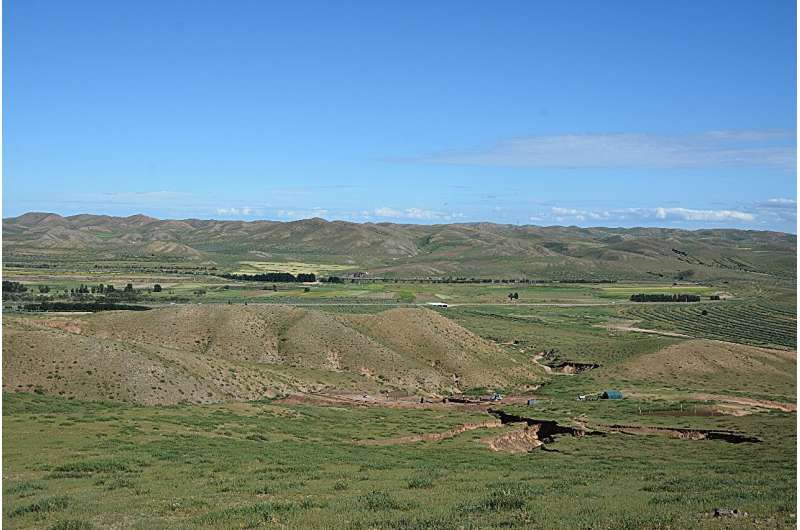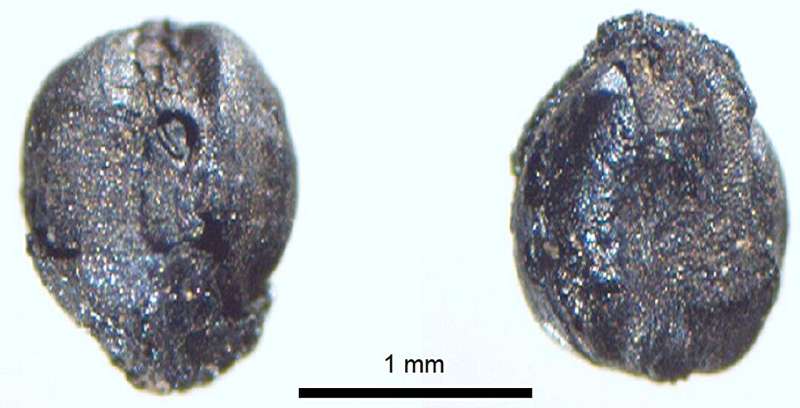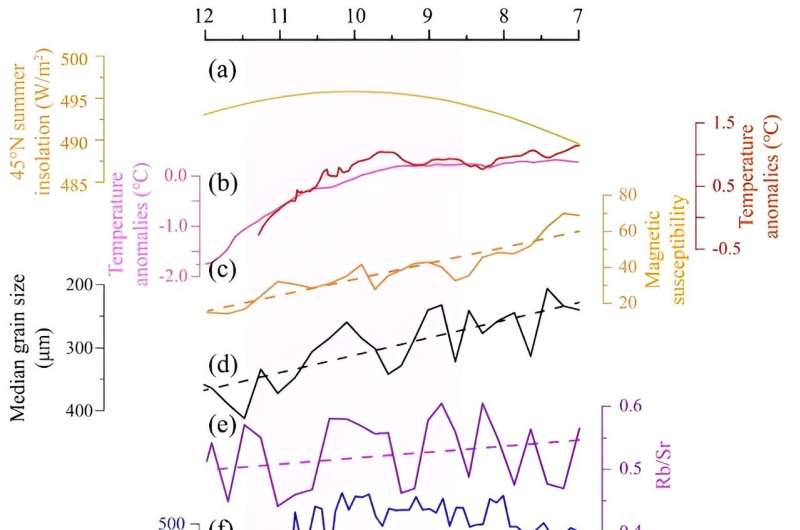This article has been reviewed according to Science X's editorial process and policies. Editors have highlighted the following attributes while ensuring the content's credibility:
fact-checked
peer-reviewed publication
trusted source
proofread
Early improvement of sandy habitat led to origin of agriculture in the farming-pastoral zone of northern China: Study

The beginning of agriculture is one of the most significant events in human history. The origin and spread of agriculture accelerated the development of human society and economy and fundamentally altered humans' role in the Earth's ecosystem. This allowed humans to transform nature while increasing food production and stability, laying the groundwork for human reproduction and civilizational development.
China is one of the world's three largest agricultural production centers. Our ancestors domesticated dryland crops, such as millet, in northern China as early as 10,000 years ago.
Archaeologists have proposed a variety of hypotheses about the origins of agriculture in northern China over the last several decades. Among them, three types of hypotheses are commonly used: stress caused by climatic instability, socioeconomic competition, and human-environment co-evolution.
In general, the debates over the factors driving the origin of millet cultivation in northern China highlight the importance of locating an archaeological site to investigate human use of plant resources, reconstruct the climate and vegetation evolution process before and during human presence, and further investigate why humans began to practice agriculture in northern China around the middle Holocene.
Archaeological work in northern China's farming-pastoral zone since 2015 has led to the recognition of the Yumin Culture (~8 ka BP) as the start of Neolithic culture in Inner Mongolia. Several archaeological sites have been excavated, including Yumin, Simagou, Xinglong, and Sitai.

These archaeological sites have yielded a large number of pottery and agricultural stone tools, as well as some animal bones and plant remains, providing evidence for the origins of agriculture in northern China's farming-pastoral zone. The Yumin site in northern China's farming-pastoral zone offers a new perspective on human-environmental interactions during the early Neolithic period, and studying the origins of agriculture in this area is critical to understanding the formation of northern China's traditional dryland farming system.
To better explain the relationship between the formation of the traditional dryland agricultural system and the changes in the geographical environment in northern China, Xin Jia and Zhiping Zhang of the Nanjing Normal University and Yonggang Sun of the Chifeng University recently led a research team composed of researchers from Nanjing University, Lanzhou University, Chinese University of Hong Kong, Nanjing Institute of Geology and Palaeontology CAS, Institute of Archaeology CASS, Institute of Cultural Relics and Archaeology of Inner Mongolia Autonomous Region, and Ulanqab Museum to examine the relationship between the origins of agriculture and climate change by combining high-resolution ancient environmental records from the Yumin Cultural Circle in Northern China.
The team conducted quartz optically stimulated luminescence (OSL) dating on the sedimentary profiles of Yumin and Banan sites belonging to the Yumin culture. They obtained soil samples via flotation and collected and identified carbonized plant seeds during the excavation of the Yumin site. The team also employed multiple proxies such as fossil pollen, magnetic susceptibility, grain size, and chemical elements to analyze the above-mentioned sedimentary profiles. Then, they obtained information about agricultural activities and climate change at the Yumin site.
Their research findings were recently published in Science China Earth Sciences.

Their research illustrates that agriculture had already begun in northern China's farming-pastoral zone during the Yumin culture period (around 8,000 years ago), as evidenced by carbonized millet at the house site (F6) of the Yumin site and combined with agricultural production and processing tools discovered during excavation, as well as 16 representative residences. The origin of agriculture at the Yumin site occurred later than a significant increase in precipitation during the early Holocene, but coincided with a substantial rise in vegetation around 8.4 ka.
Their findings indicate that the gradual improvement of hydrothermal conditions since the beginning of the Holocene has resulted in the gradual conversion of the land surface from infertile sand to organic-rich soil, providing an appropriate environmental foundation for the origin of dryland farming in northern China around 8.4 ka.
The cumulative environmental effects during the early Holocene played an essential role in the origin of agriculture in northern China, and provided a reference for agricultural management in the face of future climate change.
More information: Xin Jia et al, Amelioration of habitat since the early Holocene contributed to the origin of agriculture in the farming-pastoral zone of northern China, Science China Earth Sciences (2024). DOI: 10.1007/s11430-023-1316-9
Journal information: Science China Earth Sciences
Provided by Science China Press





















